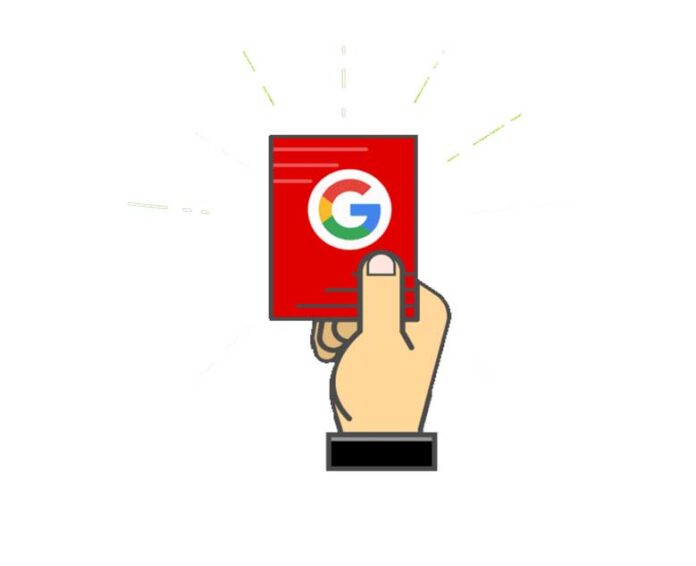
SEO is all hunky-dory when things are going your way. You’re happy when whatever strategy you are applying is taking you higher and higher up the SERPs. But the nightmare strikes when it stops happening. To make the scenario more hellish, not only are your efforts not boosting your rankings, but it seems as if whatever you are doing is further tanking your search engine ranking. Now you are confused. You can’t make sense of it. Why are your Google rankings fluctuating when you’re ticking all the boxes of optimization?
Well, it turns out you’re not at fault here.
While most of the time, a website’s search engine fluctuates are due to faulty SEO practices, other times, it’s due to a host of other reasons. They range from Google’s updates to broken backlinks. This blog will ease your stress and discuss each reason that might be causing mind-boggling shifts in your SEO keywords position and what you can do to get out of this misery.
Issues affecting your SEO keywords position
1. Google algorithm updates
Google constantly updates its ranking algorithm to provide the best user experience and relevant results. These updates can affect how your keywords rank, especially if they target specific factors like content quality, site speed, mobile friendliness, etc.
Here are some ways Google updates impact your website’s ranking:
Indexing and retrieval: Updates to Googlebots can affect how quickly new or updated content is picked up, impacting its initial ranking potential. The algorithm might prioritize different signals, like content relevance, keyword usage, user engagement metrics, or backlink profile, over others to determine the search ranking.
Modifications in recognition and understanding: Improvements in Google’s ability to understand relationships between content can influence its relevance to specific search queries, potentially impacting rankings. It can impact how the overall score for a page is calculated, leading to shifts in positions.
Spam detection and penalties: Improved spam detection algorithms could be another reason. Time and again, Google releases updates to identify and penalize manipulative or low-quality SEO tactics, like keyword stuffing or link farms, which can lead to ranking drops for websites engaging in such practices. The algorithm also considers new negative signals, like high bounce rates or user complaints, in determining the quality of the content. This also impacts rankings for pages with poor user experiences as Google may manually penalize websites violating its webmaster guidelines, causing significant ranking drops or even complete delisting.
What can you do about it?
The first step would be to research the specific focus areas, and ranking factors emphasized in the update. This will help you understand which aspects of your website might have been affected. Next, start by gathering data using the daily keywords ranking tools to track your ranking positions for key keywords across time. Identify keyword rank change after the update. You can also analyze Search Console data to see changes in organic traffic, search queries, and impressions. Look for any drops or surges in traffic coinciding with the update.
Overlay your ranking shifts with the timeline of the specific Google update to see if there’s a clear correlation. Drill down to individual pages that experienced significant ranking changes. Assess their technical health, content quality, and alignment with the relevant ranking factors. If you find critical issues on a page, fix them and then implement those changes across the website.
One more thing: If you find out that the rankings of your web pages have been hit after an update, do not panic. This is the time to stay calm. This fluctuation in ranking is not a penalty but just a modification – nothing that can’t be fixed with some changes to your content.
Remember, don’t just react to updates. Build a strong foundation of high-quality content, user experience, and technical SEO to be resilient in the face of algorithm changes.
2. Changes on your website

You won’t believe how many times web design changes throw a website into oblivion. Redoing your website might be a great step for your branding, but new websites result in ranking dips at least 80 percent of the time. And all these issues arise due to unintended reasons. For example, you have made significant URL changes, making it harder for Googlebot to crawl and index your website’s pages accurately, affecting discoverability and ranking potential.
Changes to website navigation or internal linking structure can affect how Googlebot perceives the relationships between pages, impacting internal page authority and ranking distribution. Redesigning pages also inadvertently breaks old links, leading to a loss of valuable backlinks and harming your website’s backlink profile and ranking authority.
Similarly, a redesigned website with heavier visuals or poorly optimized code can experience slower loading times, frustrating users, and potentially leading to higher bounce rates and lower dwell time. These metrics can be negative ranking signals for Google.
What can you do about it?
Monitor Google Search Console for crawl errors, indexing issues, and mobile-friendliness warnings. Use analytics tools to track page load times, bounce rates, dwell time, and other user engagement metrics before and after the redesign. Identify any significant drops or negative trends. You should also identify accessibility issues and ensure your website complies with accessibility standards. Most importantly, use backlink monitoring tools to track any loss of backlinks after the redesign and implement redirects or link reclamation strategies if necessary.
3. Competitor activity

This was highlighted in the introduction as well, that a lot of the time, the passive-aggressive behavior of your Google rankings is not due to any mistakes you might have made. Here’s an example of that. Let’s say one day, your competitor wakes up with a mind-blowing idea and implements it on their website. It was their lucky day as Google also liked the changes they made to their website and decided to improve and reward them with a boost in search engine ranking. Now, you both are competing for the same keyword, and it is very obvious that their gain would result in your loss.
What can you do about it?
Make a list of relevant keywords that you are trying to rank and then compare them with the keywords your competitor is targeting to pinpoint the ones where you’ve dropped significantly. Analyze your competitor’s content for its strengths and weaknesses in terms of relevance, depth, and user engagement. See what kind of backlinks they have and what SEO tools they might be using.
4. Seasonal or event-driven shifts

Some keywords naturally experience shifts in search volume throughout the year or due to current events. These trends are the biggest reasons behind many ecommerce site rank fluctuations. During different seasons, users may modify their search queries to align with seasonal interests or needs. For example, people may search for “summer fashion trends” in the warmer months and “winter vacation ideas” during the holiday season. Businesses can adjust their content and keywords to match these seasonal queries.
Users often conduct searches related to specific events or holidays, such as “Christmas gift ideas,” “Halloween decorations,” or “Valentine’s Day events.” Aligning your content with these seasonal themes can improve your visibility during relevant periods.
What can you do about it?
Rankings based on seasonal or event-driven shifts often return to their baseline once the trend or event passes. Building long-term SEO strength is crucial for sustained ranking success. So, while understanding how seasonal and event-driven shifts influence search engine rankings, you can adapt your SEO strategies to gain temporary benefits and capitalize on emerging trends while still focusing on building long-term organic ranking strength through high-quality content and user-centric optimization.
5. Technical issues
Sometimes, technical issues with your website, such as slow loading times, broken links, or server problems, can negatively affect your rankings. Google aims to provide users with a positive experience, so technical issues can lead to lower rankings.
Google’s Page Experience Update emphasizes metrics like Largest Contentful Paint (LCP), First Input Delay (FID), and Cumulative Layout Shift (CLS), which measure loading speed, interactivity, and visual stability. If your website has poor scores on these metrics, Google naturally downgrades you. Then, there are also errors in JavaScript code that can prevent search engines from correctly rendering your pages, affecting how they understand and index your content.
What can you do about them?
To address these issues, you must perform regular technical SEO audits and optimize website performance, page load speeds, mobile responsiveness, and Core Web Vitals. Also, adapt your technical SEO practices as Google’s ranking factors evolve.
6. Manual actions

Google may take manual actions against websites that violate its webmaster guidelines. These penalties are applied by human reviewers (not just algorithms) to websites. The most common consequence is a significant drop in search engine rankings, potentially making your website invisible to search queries. This translates to decreased website traffic and leads, impacting your online visibility and business goals.
In severe cases, Google might completely remove your website from search results.
Google’s action could be triggered by:
- Unnatural links: Buying links, link exchanges, or using link farms to manipulate rankings can trigger this action.
- Thin content: Low-quality, shallow content lacking depth or value violates Google’s quality guidelines.
- Keyword stuffing: Overusing keywords unnaturally within content or website elements to gain an unfair advantage in violation of the keyword position SEO
- Cloaking and redirects: Deceiving users or search engines by showing different content than what’s indexed.
- Spammy content: Content aimed at manipulating search results rather than providing user value.
- Backlink Changes: The quality and quantity of backlinks to your site can influence your rankings. If there are changes in the backlink profile, either due to gaining or losing links, it can impact your position in search results.
What can you do to fix it?
Start by understanding Google’s Webmaster Guidelines and assess how your content is violating these guidelines. The next step is to fix the issues which you have discovered during the audit. Once you have addressed the violation, removed bad links, and improved the content quality, submit a reconsideration request through Google Search Console, demonstrating your efforts and commitment to compliance.
7. Local SEO factors
If your business has a local presence, changes in local SEO factors, such as Google My Business information or local citations, can influence local search rankings. Another factor that might impact your rankings is the quality of your localized content. Reviews are also a big consideration for Google when it shows relevant results to the users. So, if you have bad reviews, it is naturally going to impact your rankings.
What can you do to fix them?
Add complete and accurate information, including your business name, address, phone number (NAP), hours of operation, category, website link, photos, and descriptions, in your Google My Business (GMB) and use relevant keywords.
Include city and neighborhood names in page titles, meta descriptions, headers, and content, and use structured data to highlight local business information. Make sure your website works well on mobile devices.
Get the good word out – Inspire customers to leave positive reviews on Google, Yelp, and other platforms and address any negative feedback professionally and promptly.
Encourage local customers to visit your website and always engage with them on social media to give them a sense of belonging.
Parting Thoughts
The issues affecting our SEO keywords position are sometimes caused by our mistakes, but other times, they are just due to Google’s updates and other actions. So, the idea is to understand how your website’s rankings are being affected. Use Google SEO keyword ranking tools to map trends if you witness an abrupt dip in your website traffic. Identify the issues and make an effort to fix them.